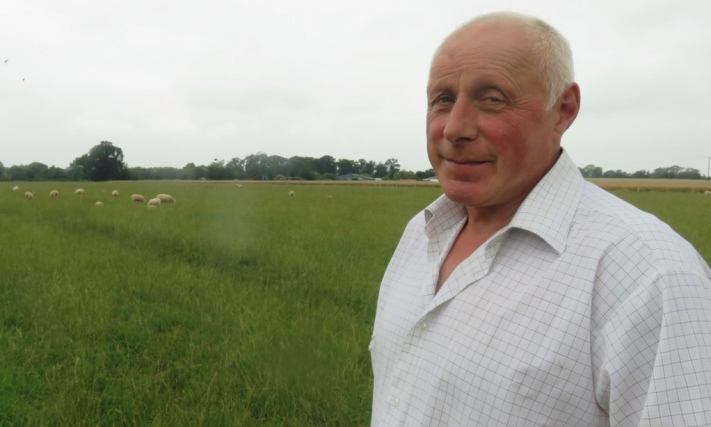High yields despite tough conditions
Landmark Extreme yields 16t/ha after tough first year
Despite being flooded and suffering spring drought, mixed farmer Ian Hudson’s new reseed, sown on 16 September 2016, yielded 16t/ha of grass silage cut at the end of May. This was more than double any previous new ley had produced.
Farming 204ha (500 acres) at Upper Dean in Bedfordshire, Mr. Hudson grows grass in rotation with spring-sown heritage oats. Five hundred composite ewes with their lambs and 60 head of cattle made up of suckler cows and calves, rotationally graze 5ha (12 acre) paddocks during the grazing season, until the heavy clay soils force them indoors for winter.
“I do a lot of reseeding on my own farm and for other farmers locally,” explains Mr. Hudson. “Because the conditions can be tricky here I tried Landmark Extreme and the mixture of different grass species has really done well.”
A highly productive and persistent mixture for cutting and grazing on adverse sites, Landmark Extreme contains Lofa and Fojtan festuloliums, Aspect late perennial ryegrass, Donata cocksfoot, Laura meadow fescue, Winnetou timothy and a white clover blend with a small amount of birdsfoot trefoil. Keen to add extra diversity, Mr. Hudson also asked for 2% Tonic plantain and 2% Choice chicory to be added into the mix.

“There was a flush of grass in November and December and then the River Til, which flows right along the field, flooded and for weeks the ground was under water. I thought it was a disaster and I would have to drill it again,” admits Mr. Hudson. “But I couldn’t get near it because it was so wet. Then in the cold, dry spring there wasn’t much growth – but come April and May it grew at a tremendous pace.”
Mr. Hudson runs a low input system and after the oats have been combined and the soil ploughed and leveled, the grass seed is blown onto the field and rolled to achieve good soil contact. Seedbed fertiliser of 250kg/ha is applied and then no more. Silage was cut on 1 June and cattle grazed the aftermath before the sheep came in on a 21-day rotation.
“It has had a very tough first year,” says Mr. Hudson. “Yet it has yielded amazingly well. The meadow fescue and timothy are early growers and the additional bulk came from the festuloliums and ryegrass.
“It has been tricky too for grazing. There are seed heads across the field now and crown rust in the bottom. I need to top it with a mower to reset it.”
Rod Bonshor, general manager for Oliver Seeds, who sells Landmark Extreme, agrees.
“Crown rust is usually seen in late summer and can be a problem in grass fields in the southern half of Britain as the fungus Puccinia coronata enjoys warm and humid conditions, exactly as has happened over recent weeks. The mild winter has made the situation worse,” he says.
“Fields should be mown to remove any seed heads and diseased material and then a tickle of nitrogen applied – 38 to 40kg/ha will be enough to get fresh growth going again. The animals can then come back in and graze for the rest of the autumn.
“It is good to know Landmark Extreme has lived up to its name on Ian’s farm. The mixture of species cover all bases in terms of the tough conditions a reseed may have to face, be it wet or dry. And our trials show year two yields can be as good, if not better!”
